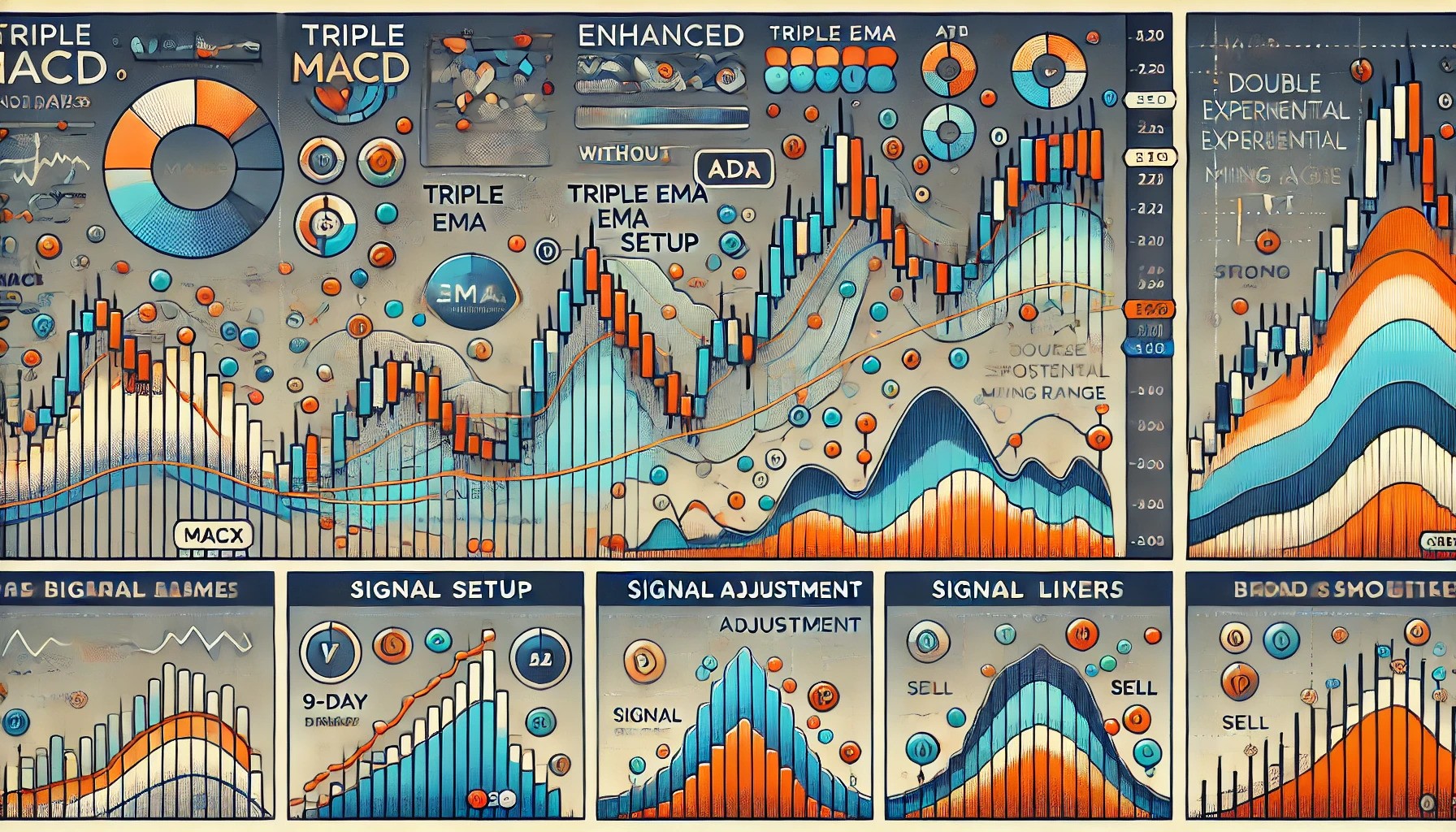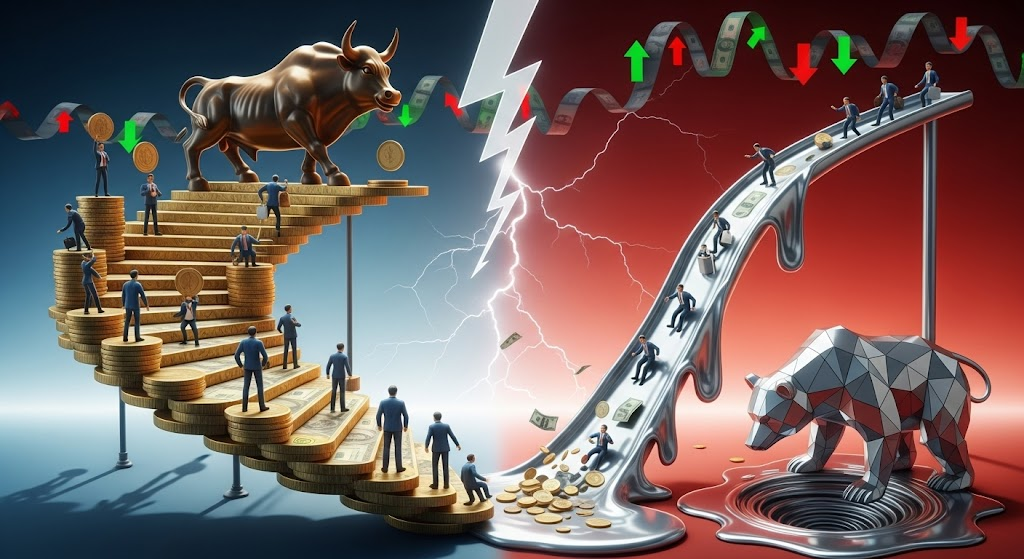In our previous workshop, we went through Richard Wyckoff’s (a famed early 20th century market analyst) original day trading principles. In this workshop, we’ll make those principles more relevant to today’s dynamic markets and cutting edge analysis tools. Wyckoff’s method of tape reading, while rooted in early 20th-century stock trading, provides a foundation for modern day trading that can be updated and enhanced with contemporary tools and concepts. Here’s an adaptation of Wyckoff’s principles, incorporating modern trading practices and a more in-depth analysis, drawing on information in the sources.
Modernized Tape Reading: Order Flow Analysis
In Wyckoff’s time, the "tape" was a literal ticker tape, but today it translates to order flow analysis, which involves interpreting the stream of buy and sell orders in real-time. This can include tools like Level 2 data, time and sales windows, and heatmaps that provide a visual representation of the buying and selling pressure. Instead of just seeing the last price, traders can see the depth of the market, giving more context to the price action. For example, a large buy order hitting the ask may indicate aggressive buying, and vice versa.
Algorithmic Trend Detection
Instead of relying solely on visual inspection of price action for a trend, modern traders can use algorithms and indicators to help identify trends. These tools can be used to spot series of higher highs and higher lows, or lower lows and lower highs in a more objective way. Additionally, tools can identify the strength of a trend based on average price movement and volume. This helps in determining the overall market direction and the appropriate trading strategy to use. For instance, applying a multi-timeframe analysis approach, a trader might identify an alignment of bullish signals—such as a price rejection from a daily order block coinciding with a four-hour internal liquidity sweep and a positive shift in cumulative delta volume—indicating a high-probability setup for initiating long positions.
Volume Analysis
Wyckoff’s emphasis on volume remains crucial, but now it includes understanding volume in relation to price action in a more sophisticated way. Volume profile tools highlight the most traded price levels over a specific period. For example, a high volume node near a resistance level may indicate a strong area where sellers are likely to be present. Tools and indicators can also help to understand whether large or small lots are driving price, and if large lots are accumulating or distributing. Additionally, volume can be analyzed in relation to the volatility of the instrument and the overall market.
Understanding Market Microstructure
Beyond Wyckoff’s basic concept of market mechanics, modern traders need a deeper understanding of market microstructure. This includes how different order types interact (limit, market, stop), the impact of high-frequency trading (HFT), and the role of market makers. For instance, a "sweep" of the order book by HFT algorithms may lead to sudden price spikes, but may also indicate the intentions of large players. A trader should also understand how different exchanges or brokers may have different pools of liquidity that can affect price.
Dynamic Levels of Support and Resistance
While Wyckoff talked about points of resistance, modern trading incorporates more dynamic support and resistance levels. These can be identified by technical analysis tools, including trend lines, moving averages, Fibonacci retracements, and pivot points. For instance, a trendline that has been touched multiple times may indicate a strong level of support or resistance. Breakouts or breakdowns of these levels, especially when accompanied by high volume, can be key trading signals. Also, volatility cones can be used to identify richness and cheapness, which can then be used for strategies like calendar spreads.
Psychological Edge in Trading
Wyckoff’s emphasis on emotional control is more important than ever, especially with the ease of access to margin accounts and the speed of modern markets. Modern traders should be aware of behavioural biases like fear of missing out (FOMO), loss aversion, and confirmation bias. Trading psychology is now a recognized field of study. For example, the discipline to not trade when the market is not acting right or after a series of losses is a key component of mental toughness, and is something Wyckoff would have recognised and advocated.
Risk Management
Modern risk management incorporates position sizing, diversification, and correlation analysis. For example, instead of simply placing a stop, a modern trader might use an options strategy to hedge against downside risk, or reduce their position size when the market is volatile. A trader might also use a basket of correlated assets to reduce risk, while diversifying across different assets and sectors. Furthermore, if a wide vertical spread is used, selling enough to match vertical delta can be a risk management tool.
Adaptability and Market Awareness
Wyckoff noted the importance of flexibility and the ability to change positions quickly. Today this includes adapting to different market conditions like high and low volatility, and not being stuck in a single view of the market. Modern tools such as sentiment analysis can help to understand the public’s opinion of the market. A trader should be prepared to change their view of the market based on the prevailing sentiment and new information. For example, they might quickly reverse a short position if they observe positive market news or a sudden change in order flow.
Focus and Specialization
While Wyckoff recommended focusing on one or two stocks, modern traders can extend this to specific sectors or asset classes. This can lead to a deep understanding of the "personality" of the instrument or sector. For example, a trader might specialize in trading technology stocks, or currency pairs, in order to gain an edge due to specialized knowledge. For example, a trader may focus on the 28 Forex pairs, as an aggregate, to spot currency strength.
Continuous Learning and Performance Analysis
Wyckoff stressed the critical importance of meticulously recording all trades to evaluate trading performance objectively. In modern trading, this principle has evolved to leverage advanced trading platforms and analytics tools that provide granular performance metrics, such as win rate, average profit and loss per trade, maximum drawdown, Sharpe ratio, Sortino ratio, and other risk-adjusted return measures. By systematically analyzing these data points, traders can pinpoint strengths, diagnose weaknesses, and uncover patterns in both strategy efficacy and execution quality.
Trading in Different Market Regimes
Wyckoff noted that trading can be done in dull markets, but more opportunities may be found in more active periods. Modern traders can adapt their methods to different market regimes by combining different indicators. For example, in a dull market, a trader might focus on mean reversion strategies while waiting for the market to become more active. In a trending market, they might switch to trend-following strategies.
Integration of Fundamental and Technical Analysis
While Wyckoff prioritised tape reading, modern traders recognize the importance of integrating both technical and fundamental analysis. For example, a trader may use technical analysis to identify an entry point but also be aware of upcoming economic news that might affect that trade. A trader should be aware of macro events or themes, and use technical analysis to enter on points of strength, or exit at points of weakness.
Profitability as a Process
Wyckoff emphasized the potential for steady profits to accumulate over time through disciplined and methodical trading. Building on this foundation, modern traders recognize that achieving a modest average profit per trade, when compounded over an extended period, can lead to substantial long-term growth. The key lies in maintaining a consistent trading approach, adhering to a well-defined plan, and prioritizing rigorous risk management. Rather than aiming for large, sporadic wins, the focus shifts to the sustainability and repeatability of small, incremental gains.
For example, a trader might employ a systematic approach to scalping or intraday trading, targeting an average profit of 0.5% per trade while maintaining a risk-to-reward ratio of 1:2. Over the course of 200 trades with a win rate of 60%, the cumulative impact of these small profits, when combined with disciplined position sizing and reinvestment, can result in exponential portfolio growth. This aligns with the concept of treating trading as a business, where each "point" gained (or profitable trade executed) contributes to the overarching goal of steady profitability.
A practical illustration could involve a trader starting with a $10,000 account. Assuming an average profit of $50 per trade (0.5% of the account), consistent execution of this strategy over 200 trades could yield a gross profit of $6,000, before accounting for transaction costs and drawdowns. This incremental approach underscores the importance of consistency, emphasizing that long-term success arises not from extraordinary single trades but from a disciplined process of compounding smaller, achievable returns.
In conclusion, while the tools and markets have evolved significantly since Wyckoff’s time, the core principles of his method remain relevant and can be effectively applied in a modern trading context with some adaptation. These include, but are not limited to, the importance of price action, volume, market understanding, emotional control, and risk management.





